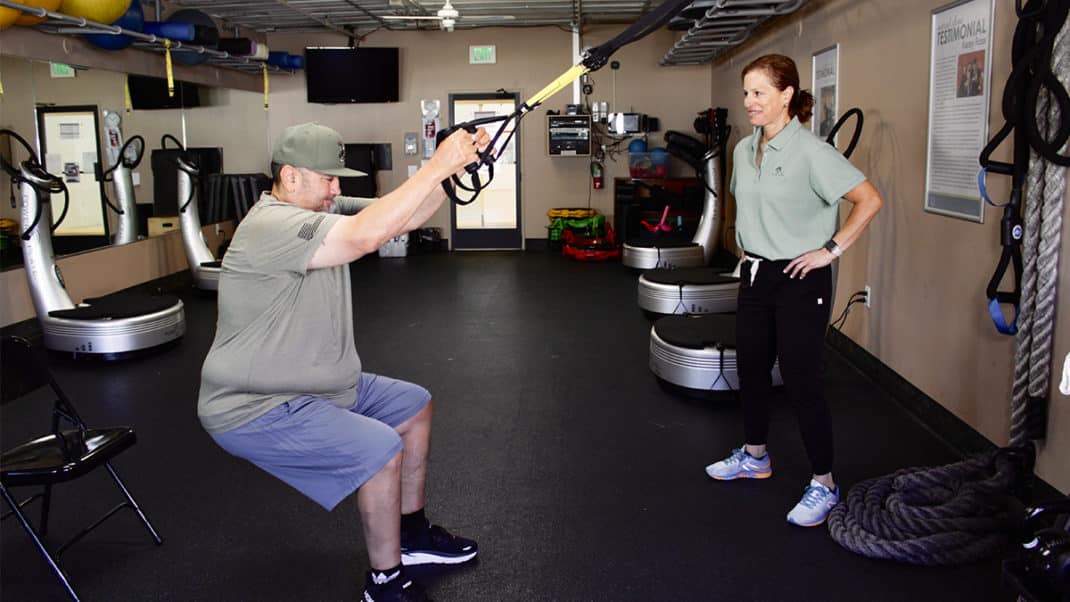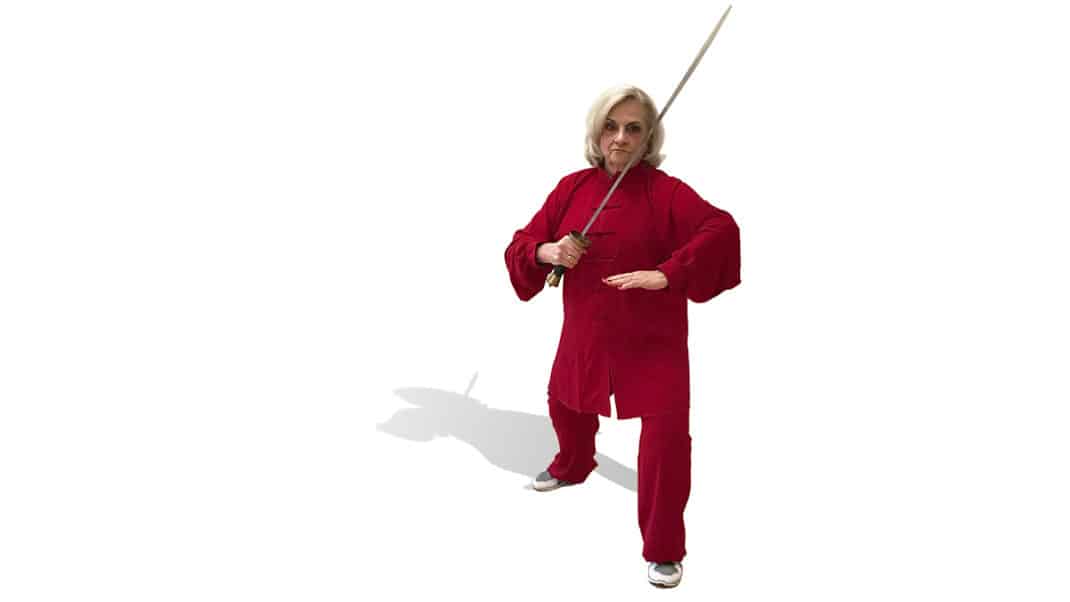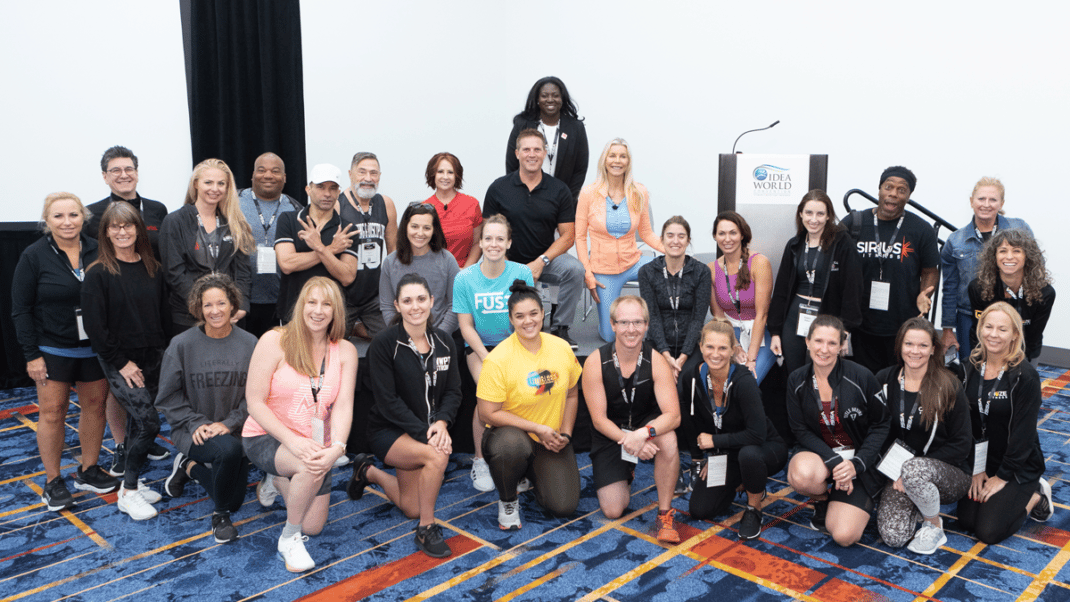Rebuilding the Injured Body
Constant feedback and careful progressions are essential for helping one client improve functional mobility.
Client: Bob
Personal Trainer: Ray Vargas, owner of ISOTONEX
Location: San Jose, California
The Broken Body. Like many men, Bob’s longtime fitness pursuit was aimed at building muscle. In hindsight, the 59-year-old physician concedes that his tactics were sometimes questionable. “I have worked out in gyms for many years,” he says. “I have always been focused on getting bigger but at the cost of proper mechanics, at times.” Those faulty mechanics would become Bob’s undoing. “I injured my back, sustaining a lower vertebral fracture and severe sciatica. I tried physical therapy, acupuncture, epidural injections, swimming and gym work on my own.” Nothing helped.
Although surgery was recommended, it would have required Bob to miss at least 4 months of work. “This was not acceptable to me, and the risk of a poor outcome was too great.” Instead of going under the knife, Bob decided to hire a personal trainer.
The Motivating Factor. During their first meeting, personal trainer Ray Vargas learned about Bob’s condition and the resulting deterioration in quality of life. “Bob was enduring nightly pain in his back and both of his legs. This affected his sleep patterns and emotional well-being, and he was unable to spend long periods of time on his feet at work without exacerbating the condition. The thing that stood out most was Bob’s frustration that the pain was affecting the quality time he spent with his 9-year-old son.”
Range of Motion 101. “Our primary goal was to keep Bob as pain-free as possible while strengthening the areas around the injury,” says Vargas. The two discussed Bob’s current strength routine, highlighting movement patterns that caused pain. “After a series of postural assessments, flexibility evaluations and cardiovascular tests, I was able to narrow the scope of focus for the training program,” says Vargas.
One of Bob’s greatest limitations was his physical inflexibility. Specifically, Bob seemed limited in his ability to touch his toes and rotate his torso. With this knowledge, Vargas and his client worked together to improve Bob’s joint range of motion.
Painless Progress. Bob started each session with a 10-minute, medium-intensity warm-up on a stationary bike or treadmill. Following were manual stretching sessions for the quadriceps, hamstrings, lower back, calves and hip flexors. “These sessions often included several minutes of exercises with foam rollers,” says Vargas. “Once there was acceptable mobility and range of motion, we progressed to a dynamic warm-up with exercises such as inchworms, gate swings and walking Frankenstein kicks.” Bob then completed strength training circuits of 2–3 exercises back-to-back, without rest, and an interval such as 1 minute of bench step-ups.
“Often, between weighted exercises, Bob would perform core-strengthing exercises for a specfied time,” says Vargas. As Bob’s stamina and strength improved, the exercise complexity increased. “Exercises such as hover planks slowly transitioned into kneeling Supermans on a BOSU® Balance Trainer. This strategy was very successful in slowly, yet surely, improving Bob’s functional abilities.”
Feedback and Flexibility. “From time to time, we did encounter a few hiccups,” recalls Vargas. “Due to his workload, Bob would often have to spend many hours on his feet, which occasionally caused his leg pain to flare up.” Sessions then consisted of longer-duration bodywork and manual stretching. “The training goal on these ‘uncomfortable days’ was not muscle hypertrophy but increased mobility, facilitating increased blood flow to the extremities and reducing stiffness.”
Feedback was crucial to the success of training sessions, so Vargas asked specific questions at the start of each session, such as: “How do you rate your pain today? Did anything from the previous session aggravate the condition? How many hours of sleep did you get last night?”
Functional Freedom. In a year and a half, Bob lost 25 pounds and 13% of his body fat. “His core strength and physical athleticism greatly improved,” adds Vargas. “Although he is not yet pain-free, his goal of being able to participate in activities with his son and family are fulfilled.”
“I am sleeping better than ever before,” adds Bob. “My wife and son are pleased with my much-improved mood. I am almost pain free. I am back coaching both baseball and swimming, teaching my son basketball and enjoying most sports with my family. This is by far the best investment I have ever made.”
Do you have a client who has overcome the odds to achieve new heights in health and fitness? Send your story to [email protected] and you and your client may be featured in an upcoming issue of IDEA Fitness Journal.
Ryan Halvorson
Ryan Halvorson is an award-winning writer and editor, and IDEA's director of event programming.






